When we discuss about solar energy, then we think about pricing of solar system, and then after the subsidy scheme of solar panels. Let’s today we know about government solar subsidy scheme & procedure of each states of India. When I start to write this information, then I discussed with many solar industry experts and research self about it. I was unable to find the following information:
- How can I get subsidy on solar?
- Where can I apply for solar subsidy?
- Who is the right person of this scheme?
- How much can I get subsidy amount?
- How much does solar subsidy amount of solar system in each states?
What is the meaning of Solar Subsidy?
We know that Solar Energy is the free & clean energy and it reduces the dependency of natural resources, such as Water and Coal. Government wants to install solar power in each houses through which each home’s roof will produce self-energy. Government supports financially to install solar power in residential homes.
Why does the Government give Solar Subsidy?
Basically, solar rooftop is a new initiative in India to generate electricity from the sunlight. If we talk about major challenges in the solar sector that awareness, money, rooftop area, solar finance are the main challenges here. If you compare rooftop solar models abroad, government subsidy and loan are basic initiatives from the government side. The Indian Government has set a target of 1 Crore homes to solarize in 2024 and they will anounched 5,000 Crore budget for rooftop solar installation. Power Distribution Companies are also working to increase the existing transformer capacity.
Subsidy Benefits
There are three parties involved in the process: 1. Customers, 2. Channel Partners, and 3. DISCOMS.
#1. Customer Benefits
The subsidy is only available on Residential Homes (Individual Homes & Big Apartments), not commercial and industrial sectors. A solar subsidy is only available on Grid Connected Solar System (Without Battery System). As installing a solar system is a huge investment, the financial assistance motivates people to invest and takes some burden off their shoulders.
| System Capacity (kW) | Solar Subsidy (in %) |
| 1kW | ₹ 30,000 |
| 2kW | ₹ 60,000 |
| 3kW | ₹ 78,000 |
| 4kW to 10kW | ₹ 78,000 (Capped) |
Homeowners can only install a solar system and claim subsidy through the state DISCOM. They will share customer details and register the nearest channel partner. You can find all states DISCOMS from here.
If you install solar system though subsidy scheme, the solar installation company will provide 5 years of performance warranty, then after you are self responsible for your solar system.
This subsidy is not available for commercial and industrial customers because they can avail other benefits like accelerated depreciation, tax holidays, excise duty exemptions.
#2. Channel Partner Benefits
Channel Partners benefit from a larger customer base and more business. It is difficult for a common person to figure out the processes of getting the subsidy though he very much desires it. It is now that the channel partner comes into the picture. He tries to work with the customer and the government departments and expedite the process of getting a subsidy for the customer.
#3. DISCOMS Benefits
Power consumption demands reduce in residential sectors and they can give more in commercial area. We know that Commercial areas need more electricity than residential.
The customer is happy as he got his financial aid, the channel partner is happy as he got a new customer and the government is happy too as it is one step closer to its solar target installation.
Subsidy Demerits
Let’s see some demerits of subsidy scheme:
#1. Customer’s Demerits: I think, there are 2 major demerits, if we install solar system through government subsidy scheme.
- Less Warranty: If you install solar system through government solar subsidy scheme, then you will get full system warranty is 5 years. You will be change an inverter after 5 – 7 years.
#2. Channel Partner’s Demerits: As per discussion with industry experts, they face the following problems:
- Big Investment
- Not Assurity of Returning Subsidy Amount from DISCOMs after giving subsidy amount
- System Service & Warranty for next 5 years
Solar Panel Subsidy Cost Estimation
Benchmark cost of grid connected solar system by MNRE, in 2024:
| System | Benchmark Cost (₹/W) |
| 1kW | ₹51.10 |
| Above 1kW to 2kW | ₹46.98 |
| Above 2kW to 3kW | ₹45.76 |
| Above 3kW to Upto 10kW | ₹44.64 |
| Above 10kW and Upto 100kW | ₹41.64 |
| Above 100kW and Upto 500kW | ₹39.08 |
If you have planned to install solar system with latest technology product so average cost is Rs. 60,000 per kw across India but price differs little bit state to state also. This is average price without subsidy which includes product cost, installation cost, service cost for 5 years with net metering facility.
| Capacity | System Cost | Central Subsidy | Net Price |
| 1kW | ₹60,000 | ₹30,000 | ₹30,000 |
| 2kW | ₹1,20,000 | ₹60,000 | ₹60,000 |
| 3kW | ₹1,80,000 | ₹78,000 | ₹1,02,000 |
| 5kW | ₹2,90,000 | ₹78,000 | ₹2,12,000 |
| 6kW | ₹3,48,000 | ₹78,000 | ₹2,70,000 |
| 8kW | ₹4,40,000 | ₹78,000 | ₹3,62,000 |
| 9kW | ₹4,95,000 | ₹78,000 | ₹4,17,000 |
| 10kW | ₹5,50,000 | ₹78,000 | ₹4,72,000 |
Both central and state offer subsidy schemes to people for installing solar rooftop systems. The central government pays a 30% subsidy for these systems to states in general categories. For special states like states such as Uttarakhand, Sikkim, Himachal Pradesh, Jammu & Kashmir and Lakshadweep, subsidy of up to 70% is given by the central government.
To avail subsidy, the average cost of installation of rooftop PV system without subsidy should be around Rs 60,000 - 70,000. In order to avail generation-based incentive, the customer should generate 1100 kWh - 1500 kWh per year.
A person who is interested in getting a subsidy needs to follow some protocols. He will have to contact their electricity provider (or may even apply online with necessary documentation) who will visit the installation site for a review and give approval. Then the electricity provider visits for inspection. Customers can then avail the subsidy amount. Source:https://pmsuryaghar.gov.in/
How to Verify Authorized Vendors/Channel Partners by DISCOMS?
I am sharing few guides to verify authorized vendors/channel partners that you can contact them. You have to visit on your DISCOM websites and search authorized channel partners list in your area and then contact them.
Solar System Cost as Per MNRE Cost
Government has revised solar system price every year. We are sharing with you for your reference. Most probably, you will get similar solar system price through solar subsidy.
Solar Panel Subsidy Scheme in India 2024
#1. Solar Panel Subsidy in Uttar Pradesh
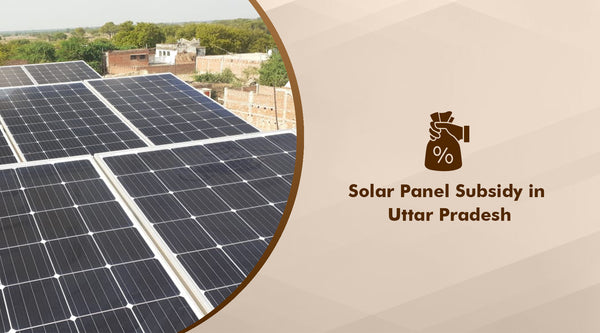
Uttar Pradesh is one of the largest and most backward states in India but with high solar radiation. The state is looking to set up solar parks in different parts of the state on government land. UP has the seventh-largest installed rooftop solar power generation capacity in India.
Read more...
#2. Solar Panel Subsidy in Kerala

For group housing society projects and residential welfare associations, with a capacity up to 500 kW, the center will provide a subsidy of 20%. If a customer wishes to install the plant investing the whole amount, they can choose to avail up to 40% of plant cost as subsidy.
Read more...
#3. Solar Panel Subsidy in Maharashtra

The solar project subsidy in Maharashtra is managed by MEDA. Maharashtra’s installed solar energy capacity now accounts for more than 1800 MW and rooftop solar is near 230 MW. It has the fourth-highest installed rooftop solar power generation capacity across the country. The state is strengthening its policy of providing financial assistance for using solar energy in cottage and micro industries.
Read more...
#4. Solar Panel Subsidy in West Bengal

West Bengal is a pioneer in solar technology in India. Government-owned WEBEL was one of the first manufacturers of solar energy panels in the country. It is mandatory for all large housing societies in West Bengal, (having a total contract demand of more than 500 kW) to install solar rooftop systems to meet a minimum of 1.5% of their total electrical load by solar energy. The subsidies are applicable as per SECI guidelines.
Read more...
#5. Solar Panel Subsidy in Bihar

Solar Industry की बढ़ती ग्रोथ को देख कर इंडिया क हर स्टेट में सोलर पर सब्सिडी की सुविधा उपलब्ध है | हर राज्य में एक Government Website है, जहाँ पर सोलर सब्सिडी की Information दिए हुआ रहता है | 99% लोगो को यह पता नहीं होता है कि सब्सिडी मिलेगा कैसे और कितना मिलेगा ?
Read more...
#6. Solar Panel Subsidy in Haryana

To save and resources for the future generation, of Haryana (Department of Renewal Energy) has started an electricity saving project called as Solar Rooftop Power Plant. Under this scheme, provides Solar System Plant to every Residential, Institutional, Social Sector, Private, and Commercial & Industrial Sector across state.
Read more...
#7. Solar Panel Subsidy in Madhya Pradesh
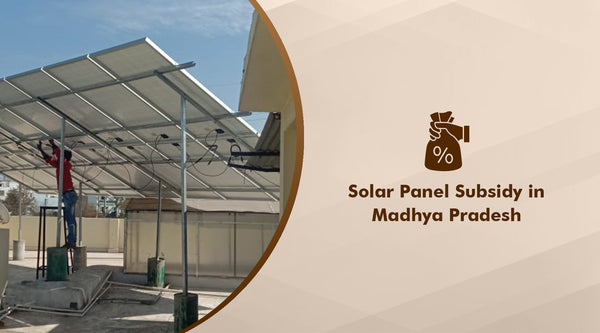
मध्य प्रदेश सरकार ने नवीन एवं नवकरणीय ऊर्जा मंत्रालय, भारत सरकार के मार्गदर्शन में राज्य में आवासीय क्षेत्रों में सौर ऊर्जा के प्रसार के लिए व्यापक स्तर पर योजनाएं तैयार कर लोगों को स्वच्छ एवं हरित ऊर्जा की तरफ लेकर जाने का प्रयास किया है। सरकार का प्रयास है कि जितना अधिक लोग सौर ऊर्जा की तरफ जाएंगे उतना ही राज्य शासन के संसाधनों का बेहतर उपयोग होगा और घरेलू खपतकर्ताओं को आर्थिक लाभ भी होगा।
Read more...
#8. How to apply for solar subsidy in Madhya Pradesh?
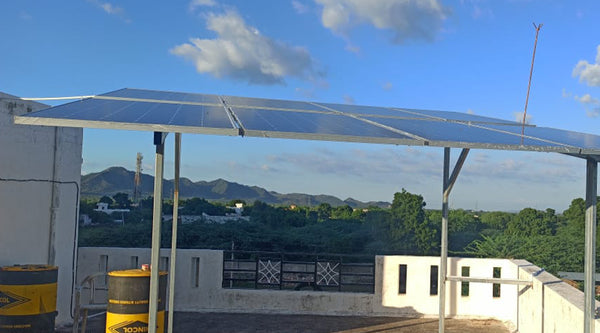
The government announced a 40% subsidy for up to 3 kW system but it was difficult to get due to the unavailability of funds during the pandemic. It’s available for residential homeowners who install on-grid solar systems. It is provided by the state DISCOM company after submitting the complete installation documents on their portal.
Read more...
#9. How to apply for solar subsidy in Andhra Pradesh?

The government announced a 40% subsidy for up to 3 kW system but it was difficult to get funds due to the pandemic. The subsidy is available for residential homeowners who install on-grid solar systems. It is provided by the state discom company after submitting the complete installation documents on their portal.
Read more...
10. How to apply for solar subsidy in Rajasthan?

The government announced a 40% subsidy for up to 3 kW system but it was difficult to get funds due to the pandemic. The subsidy is available for residential homeowners who install on-grid solar systems. It is provided by the state discom company after submitting the complete installation documents on their portal.
Read more...
11. How to get solar subsidy in Jharkhand?

The government announced a 40% subsidy for up to 3 kW system but it was difficult to get funds due to the pandemic. The subsidy is available for residential homeowners who install on-grid solar systems. It is provided by the state discom company after submitting the complete installation documents on their portal.
Read more...
12. How to get solar subsidy in Bihar?

The government announced a 40% subsidy for up to 3 kW system but it was difficult to get funds due to the pandemic. The subsidy is available for residential homeowners who install on-grid solar systems. It is provided by the state discom company after submitting the complete installation documents on their portal.






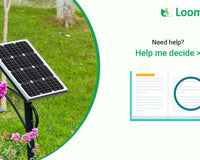

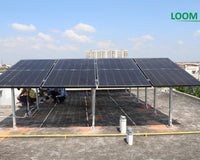




216 comments